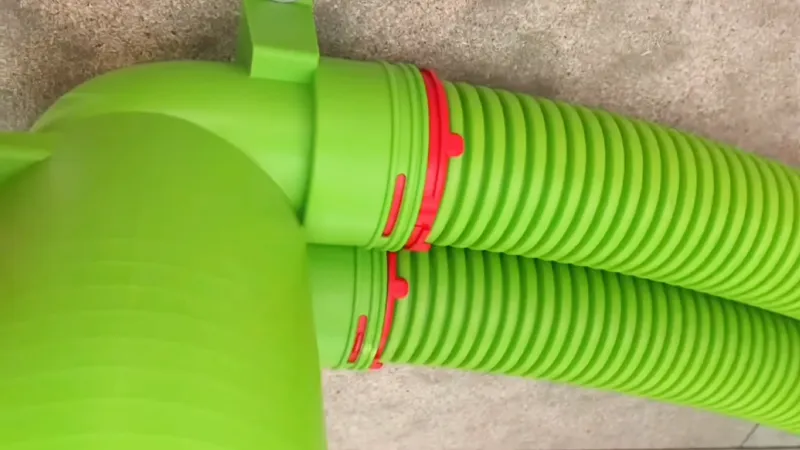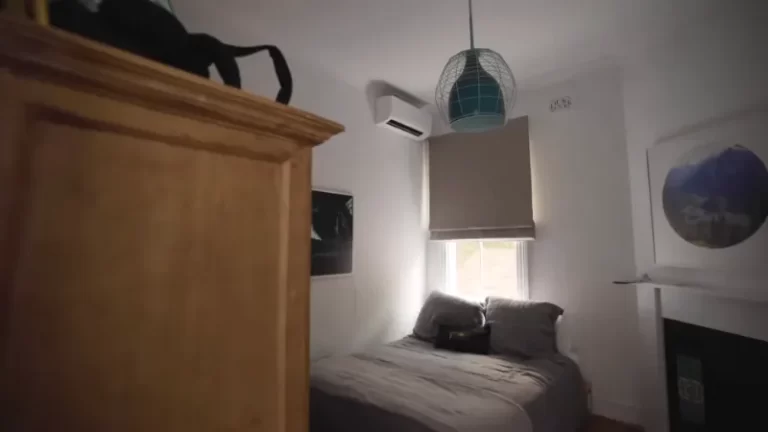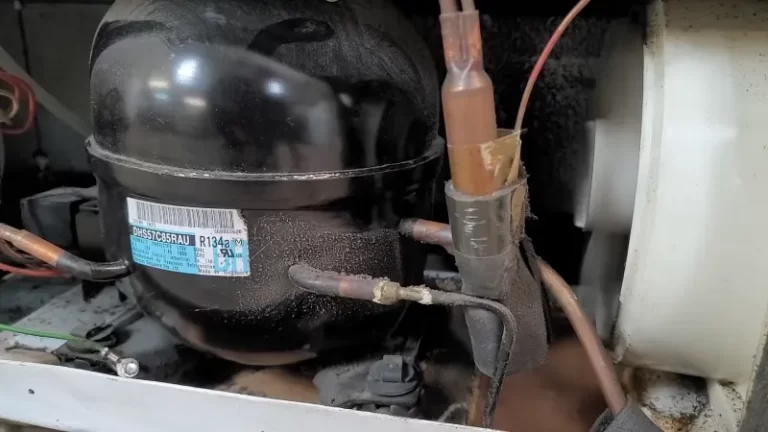Why Do I Have 2 Vents on One Duct?

Having two vents on one duct can be a useful configuration for many homeowners and businesses. For example, if you have a large room or open floor plan with high ceilings, adding a second vent to your duct system can help distribute heating and cooling more evenly throughout the space.
Additionally, having two vents on one duct can help increase the overall efficiency of your heating and cooling system by allowing more airflow and reducing the risk of blockages or other issues that can disrupt performance.
In this blog post, we will explore the benefits of having two vents on one duct, as well as some of the factors you should consider when installing and maintaining this configuration.
You'll Learn About
Why is There Two Air Vents in My Room?
Balance of Heating and Ventilation
It’s important to consider the balance of heating and ventilation in your home, as well as the potential for odors to drift between rooms. It’s generally a good idea to have an exhaust fan in the bathroom to help remove moisture and odors.
Adding a New Register
If you are adding a new register in the bathroom and want to ensure that the living room is not impacted, you could consider installing a damper at the takeoff point from the main duct to the new branch to the bathroom.
This will allow you to adjust the airflow and maintain an appropriate balance of heating between the two rooms. It’s also a good idea to make sure that the bathroom is well insulated and sealed to prevent drafts and help maintain a comfortable temperature.
Ventilation Types in Homes
In order to maintain healthy indoor air quality, proper ventilation is crucial. Homes require several types of vents to regulate air flow and pressure. Below are the names and explanations of the necessary vents.
Supply Vents
These vents supply fresh air into a room from the outside. They are typically located near the floor or ceiling and come in a variety of sizes and shapes.
Return Vents
Return vents remove stale indoor air and return it to the heating, ventilation and air conditioning (HVAC) system for treatment and recirculation. These vents are usually located near the ceiling and come in a variety of sizes and shapes.
Exhaust Vents
Exhaust vents remove air from bathrooms, kitchens, and other moisture-producing areas. These vents prevent moisture buildup and promote proper ventilation.
Chimney Vents
Chimney vents allow toxic gases produced by burning fuels to escape the home. These vents are necessary for the safe operation of fireplaces, wood stoves, and other fuel-burning appliances.
By having a proper balance of supply and return vents, homes can maintain healthy indoor air quality and prevent indoor air pollution. It is important to regularly inspect and clean all vents to ensure they are functioning properly.
Benefits of Having Two Vents on One Duct
There are several benefits to having two vents on one duct:
Increased Air Flow
With two vents on one duct, you can allow more air to flow into a room or space, which can be especially useful in larger rooms or areas with high ceilings. This can help improve the overall comfort level in the space, as well as help to reduce the risk of drafts or cold spots.
Better Distribution of Heating and Cooling
Having two vents on one duct can also help distribute heating and cooling more evenly throughout a space, which can help to create a more comfortable environment. This is especially important in larger rooms or open floor plans where it may be difficult to maintain a consistent temperature.
Improved Efficiency
Having two vents on one duct can also help improve the overall efficiency of your heating and cooling system. By allowing more air to flow through the system, you can reduce the risk of blockages or other issues that can disrupt performance. This can help your system to operate more efficiently, which can save you money on energy costs in the long run.
Overall, having two vents on one duct can be a useful configuration for many homeowners and businesses looking to improve the comfort and efficiency of their heating and cooling systems.
Factors to Consider When Installing Two Vents on One Duct
There are several factors to consider when installing two vents on one duct:
Size of the Duct
It’s important to ensure that the size of the duct is appropriate for the size of the vents you are installing. If the duct is too small, it may not be able to accommodate the additional airflow from the second vent. On the other hand, if the duct is too large, the air flow from the second vent may not be sufficient to effectively heat or cool the space.
Size of the Vents
The size of the vents you choose will depend on the size of the room or space you are heating or cooling, as well as the size of the duct. In general, larger rooms or spaces will require larger vents, while smaller rooms or spaces can be adequately heated or cooled with smaller vents.
Location of the Vents
The location of the vents in the room is also important. It’s generally a good idea to position the vents near the center of the room, rather than near the walls or corners. This can help to distribute the air more evenly throughout the space.
Tips for ensuring optimal performance:
Make Sure the Vents Are Properly Balanced
If one vent is larger or positioned closer to the furnace than the other, it may draw more air, causing the other vent to underperform. To avoid this, make sure that the vents are properly balanced and evenly positioned.
Keep the Vents Clean
Regularly cleaning the vents and filters can help ensure that they are functioning optimally. This includes removing any dust, dirt, or debris that may be blocking the airflow.
Check the Seals
Make sure that the seals around the vents are in good condition, as this can help to prevent drafts and improve the overall efficiency of the system.
By considering these factors and following these tips, you can help ensure that your two vents on one duct are properly installed and functioning optimally.
How Many Vents Should Each Room Have?
A heating, ventilation, and air conditioning (HVAC) system is designed to provide a comfortable living environment by regulating the temperature and air quality in your home. One of the important components of an HVAC system is the return vent, which allows air to circulate back to the air handler to be re-conditioned.
Number of Return Vents Per Room
Ideally, each room in a home should have one return vent to ensure consistent air pressure and proper air circulation. Having multiple return vents in each room helps in achieving this. Even having two or three return vents is better than having just one.
This helps in maintaining an even temperature throughout the home and reduces the workload on the HVAC system.
Own Return Vent
However, it is not necessary for every room to have its own return vent. If your home has only one return vent, it is still considered to be functioning fine. In this case, it is important to keep the doors to each room open so air can circulate properly.
Multiple Return Vents
Having multiple return vents in each room of a home is ideal for proper air circulation and consistent air pressure. However, even one return vent is sufficient to regulate the temperature and air quality in a home, as long as the doors to each room are kept open.
How to Maintain Two Vents on One Duct
To maintain two vents on one duct, it’s important to follow a regular maintenance routine that includes cleaning and inspecting the vents, as well as keeping the ductwork clean and in good repair. Some tips for maintaining two vents on one duct include:
Clean the Vents Regularly
To keep your vents functioning optimally, it’s important to regularly clean them. This includes removing any dust, dirt, or debris that may be blocking the airflow. You can use a vacuum cleaner with a brush attachment to gently clean the vents, or you can use a soft cloth or duster.
Replace the Filters
If your vents have filters, be sure to replace them regularly. Filters can become clogged with dirt and debris, which can reduce airflow and impact the efficiency of your heating and cooling system. Follow the manufacturer’s recommended replacement schedule for your filters, or check them monthly and replace them as needed.
Inspect the Vents
Regularly inspect the vents for any signs of damage or wear and tear. This includes checking for cracks, dents, or other types of damage. If you notice any issues, be sure to have them repaired or replaced as needed to help ensure that your system is running efficiently.
Keep the Ductwork Clean
It’s also important to keep the ductwork clean and in good repair. This includes inspecting the ducts for any signs of damage, such as holes or leaks, and repairing or replacing them as needed. Additionally, be sure to remove any debris or obstruction that may be blocking the airflow through the ducts.
By following these tips and maintaining your two vents on one duct regularly, you can help ensure that your heating and cooling system is running efficiently and effectively.
Final Thoughts
Having two vents on one duct can offer a number of benefits for homeowners and businesses, including increased air flow, better distribution of heating and cooling, and improved efficiency.
To ensure optimal performance, it’s important to consider factors such as the size of the duct, the size of the vents, and the location of the vents in the room. Additionally, proper maintenance, including cleaning and inspecting the vents regularly and replacing filters as needed, is crucial to keep your system running smoothly.
Overall, having two vents on one duct can be a useful configuration for many homeowners and businesses looking to improve the comfort and efficiency of their heating and cooling systems. If you’re considering adding a second vent to your duct system, be sure to keep these tips in mind.
Having two vents on one duct is often done to improve airflow distribution in a room or to serve multiple areas efficiently. This setup can help balance air pressure and ensure consistent heating or cooling throughout your home.
While exploring your HVAC system, consider other common issues. For example, if you’re wondering whether a bat can get in through an air conditioner, it’s important to seal any gaps to prevent pests.
Additionally, learning how to reset your Delonghi air conditioner can resolve performance issues. For more tips, check out our guide on why Mastertech air conditioners are a good brand.


